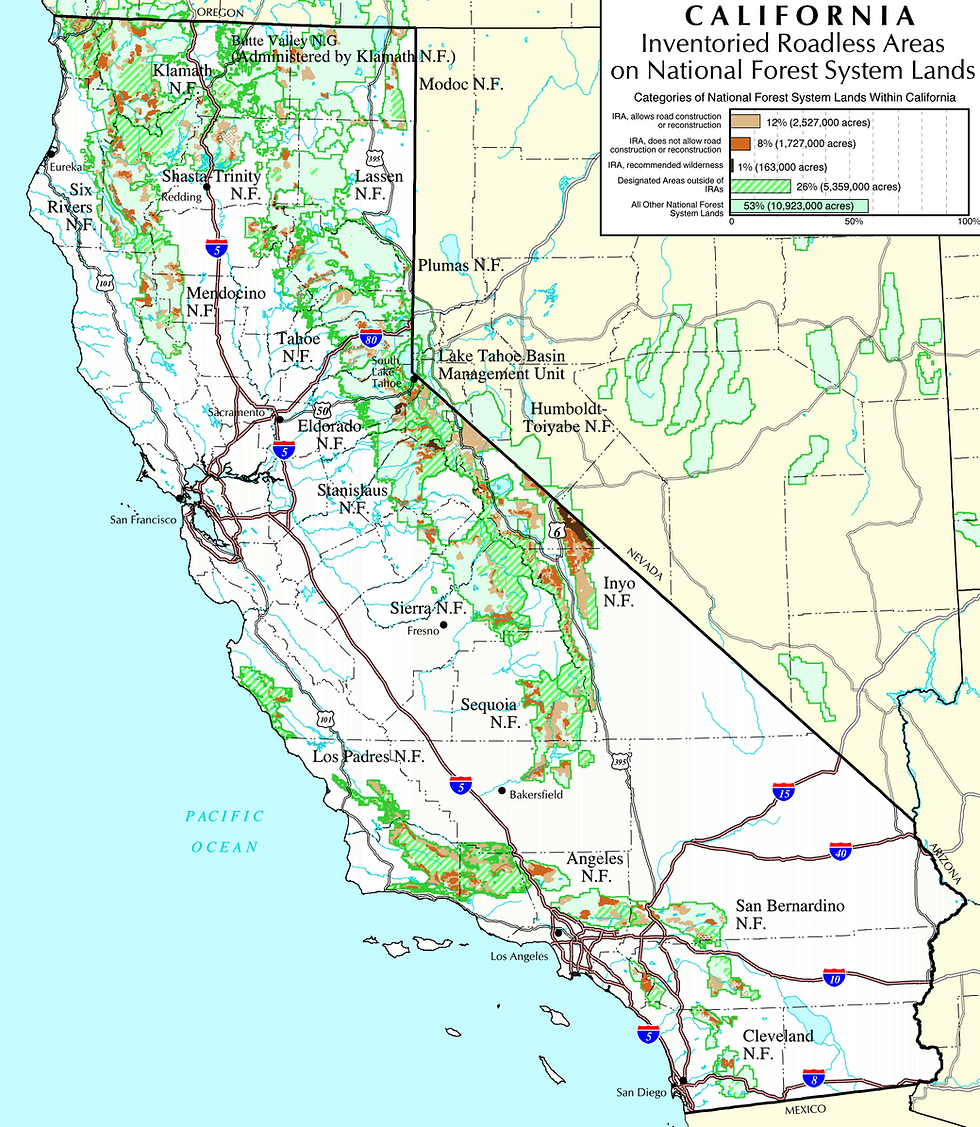Take Action—Tell the Fish and Wildlife Service to Protect the Pacific Fisher
- EPIC Staff
- Jan 28, 2015
- 3 min read
Updated: Aug 25, 2023

The Pacific fisher faces many threats to its survival and conservation. From logging to roads, stand-replacing wildfires and overly-aggressive fuel reduction programs, and the explosion in illegal marijuana growing and the associated use of anticoagulant rodenticides, the small, isolated populations of West Coast fishers have long needed the protections afforded by the ESA. However, EPIC is concerned with certain proposals put forward by the Service and big-timber interests.
First, EPIC is concerned about the designation of critical habitat for the fisher and the development of a subsequent fisher recovery plan. The ESA normally requires the Service to designate critical habitat for a listed species concurrently with a listing determination. The Service has indicated it will not do so for the fisher. Instead, the designation of critical habitat will be pushed out into the future. In developing future critical habitat, it is essential that the Service pay close attention to the conservation needs of the fisher and not rely on the conservation strategy for the northern spotted owl to adequately protect the fisher.
Like the northern spotted owl, the fisher primarily relies on old, mature forests and complex forest structures, like snags and mistletoe brooms, for denning, feeding, and dispersal behaviors. Because of these similarities, there is pressure to rely on the conservation strategy developed for the northern spotted owl—most notably, relying on northern spotted owl critical habitat and the system of late-successional reserves on our public lands for the conservation of the fisher. However, reliance on the extant conservation strategy for the northern spotted owl will not likely be sufficient to protect and conserve the fisher across the species’ range. While the owl and the fisher do use some similar habitats, the best available research shows us that the habitat for these two species does not entirely overlap, and that conservation of the fisher will rely on a more comprehensive strategy.
Second, EPIC is concerned with attempts to redefine which populations should be afforded protection under the Endangered Species Act. The U.S. Fish and Wildlife Service is considering several listing configurations for the west coast population of the fisher. When only a portion of a larger species is proposed for listing, the ESA provides for the ability to list what is known as a Distinct Population Segment (DPS). At present, the U.S. Fish and Wildlife Service is considering whether or not to include the entire West Coast population of the fisher into one DPS, or if it will break out the Sierra, Northern California, and Washington and Oregon populations into smaller listable units. EPIC supports the designation of the entire West Coast population of the fisher as a single DPS. Listing of the entire West Coast population of the fisher under the ESA will increase the likelihood that the small, isolated populations of the fisher can persist, and perhaps even reconnect. In addition, listing of the West Coast population of the fisher will serve to improve landscape management, which in turn, will aid in our goals of protecting and connecting our wild and forested landscapes.
Lastly, EPIC is concerned that the Service may attempt to weaken the normal protections afforded to a threatened species to lessen the sting of the ESA on industries which degrade fisher habitat. In addition to the failure to promptly designate critical habitat for the fisher, the U.S. Fish and Wildlife Service has indicated that it is considering the promulgation of a “4(d) rule” which would allow the Service to weaken the default ESA protections for the fisher in favor of promoting so-called “fisher-friendly forestry.” EPIC opposes any such rule which serves only to weaken ESA protections afforded to the fisher.
Action:
Tell the U.S. Fish and Wildlife Service:
Listing of the West Coast population of the fisher is a warranted action.
List the entire West Coast fisher populations as a single Distinct Population Segment.
You oppose any rule that would weaken Endangered Species Act protections for the fisher in favor of “fisher-friendly forestry.”
Send Comments to Federal eRulemaking Portal:





Comments